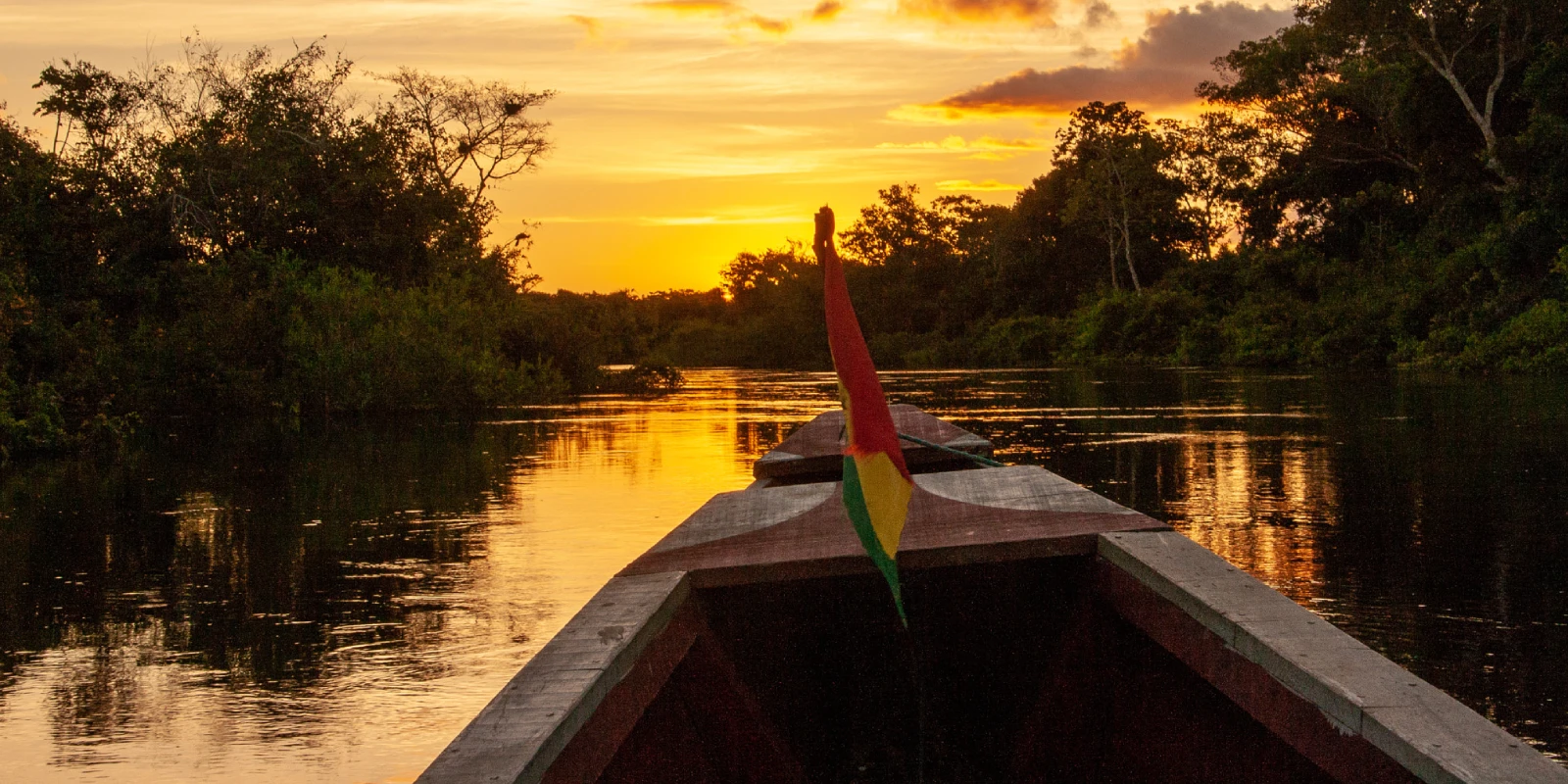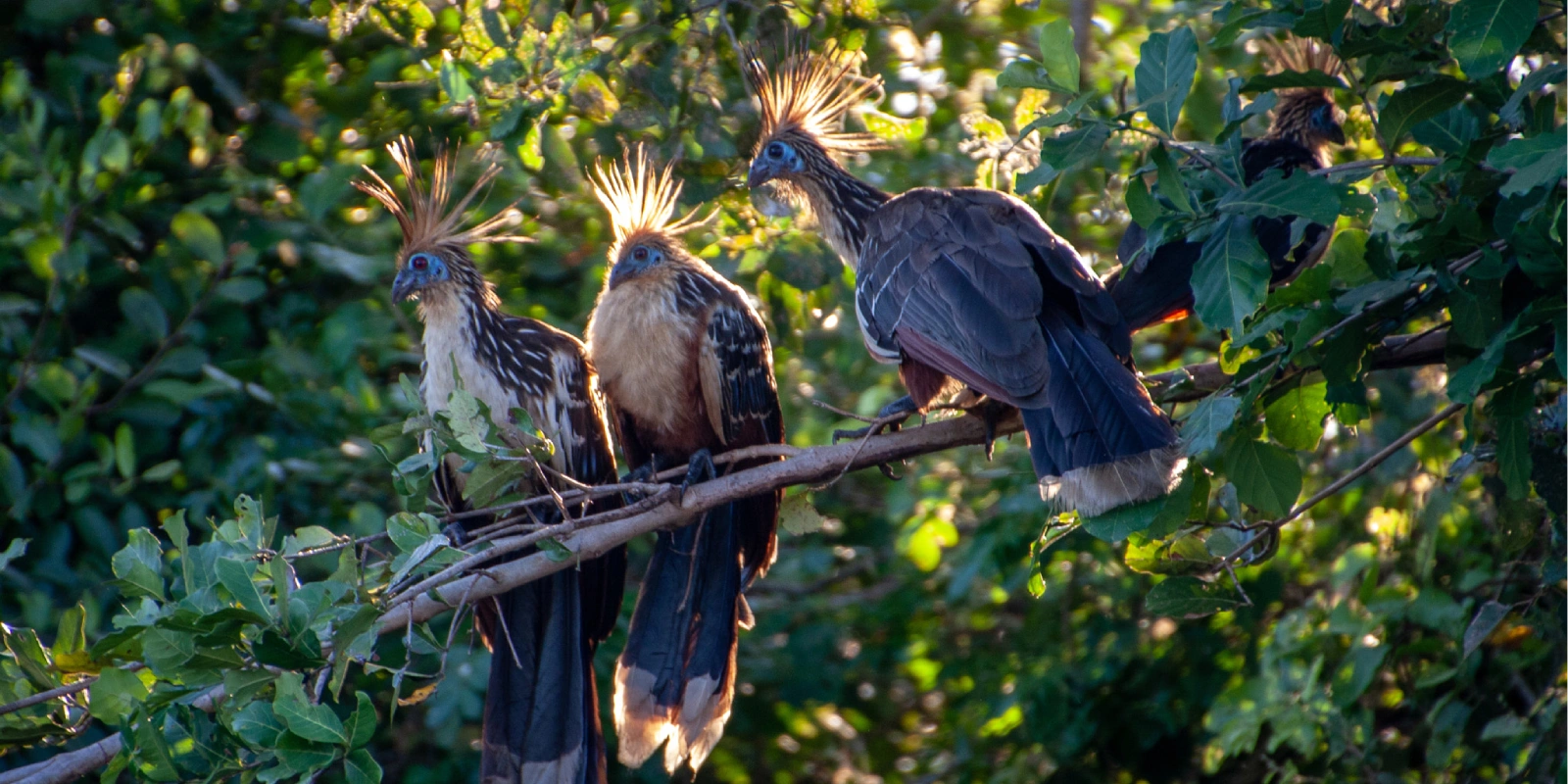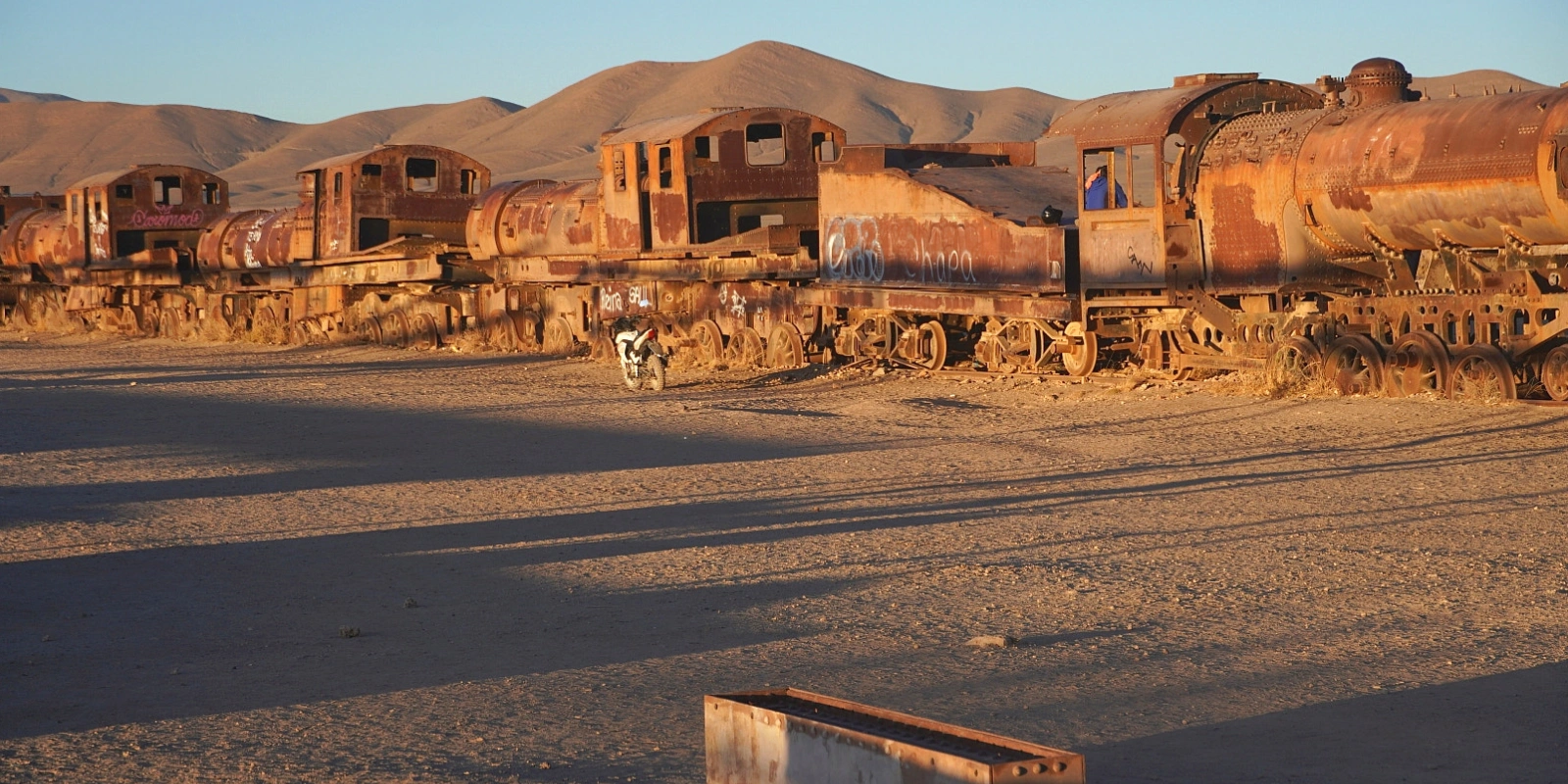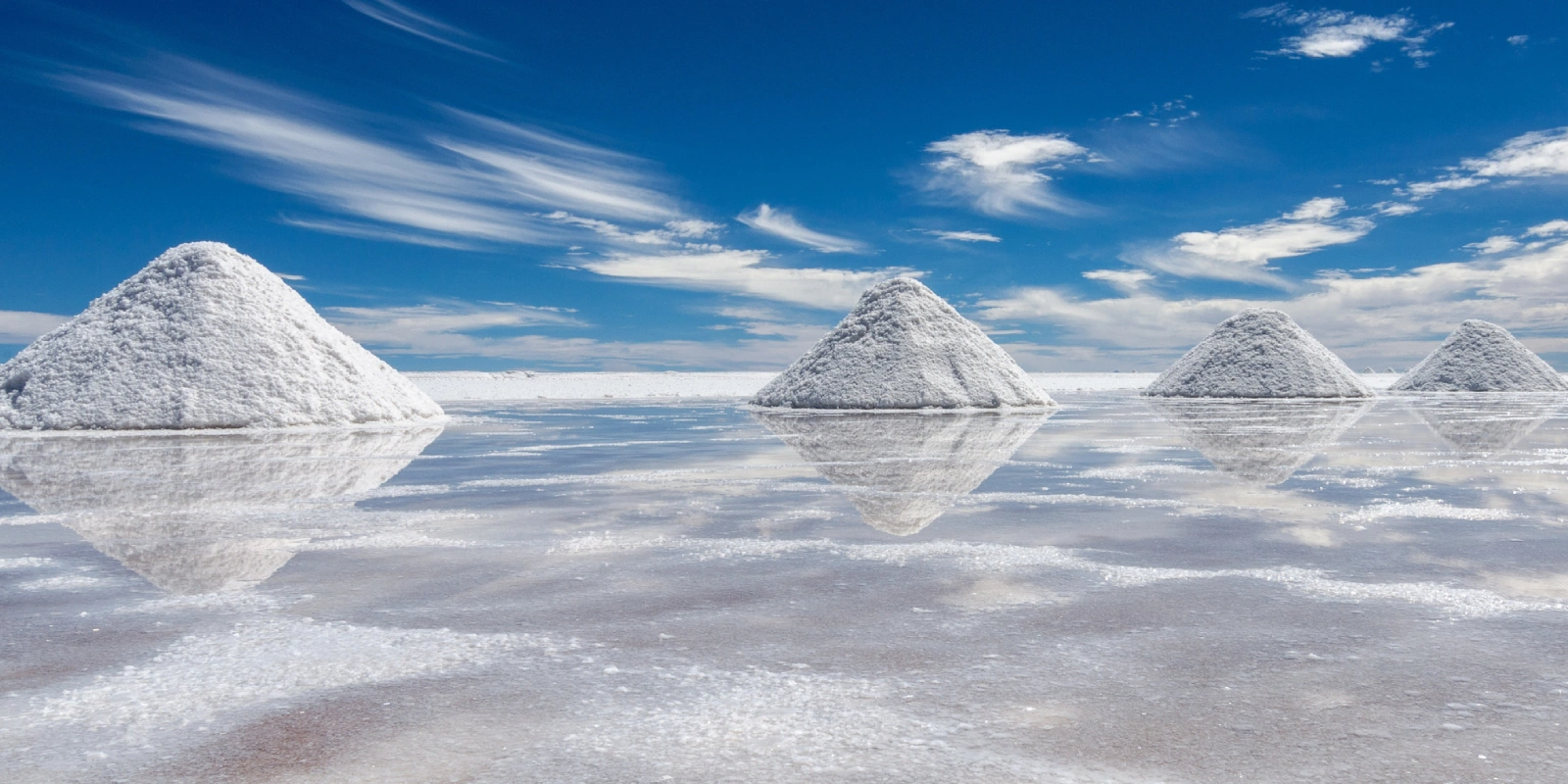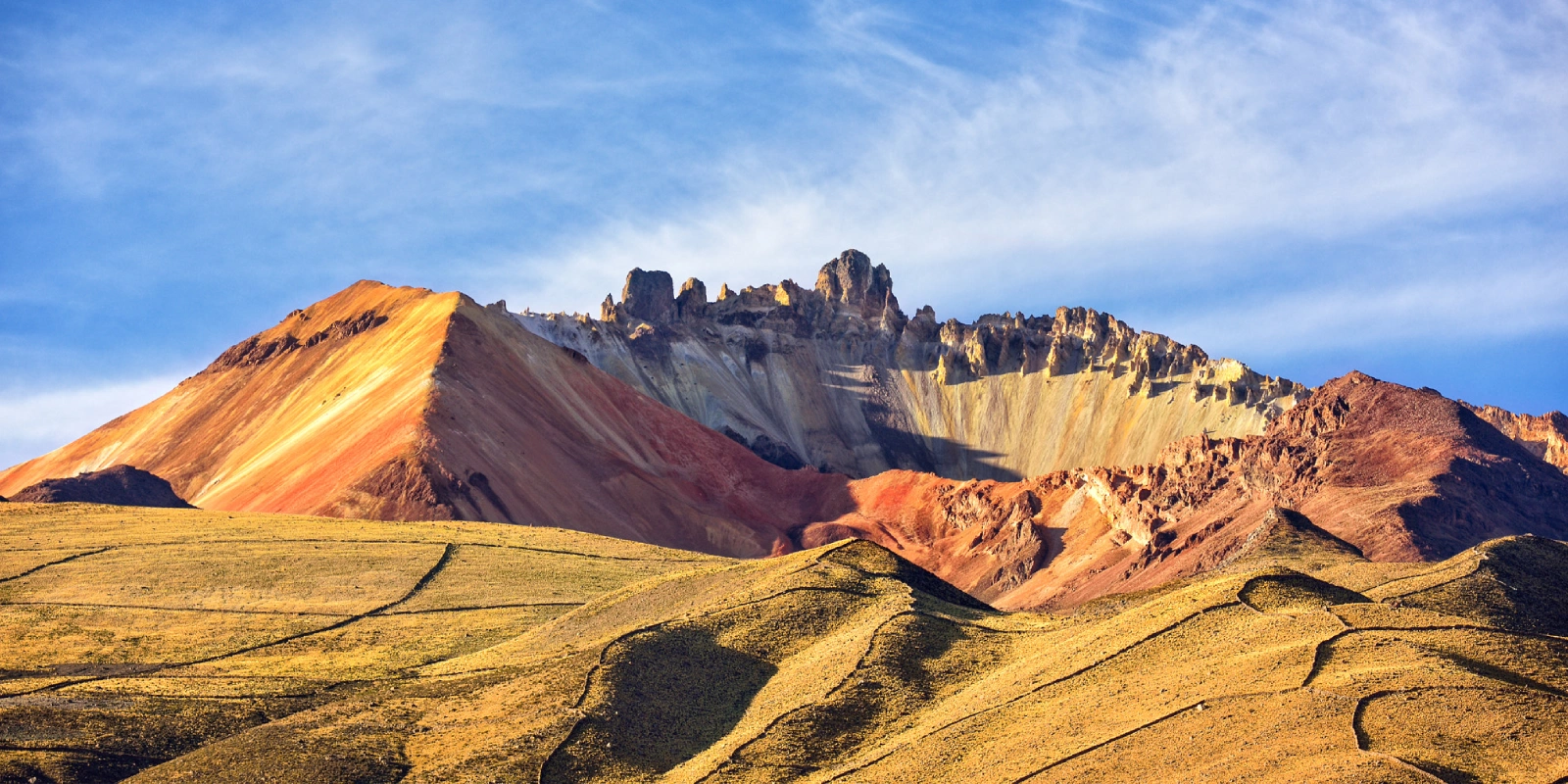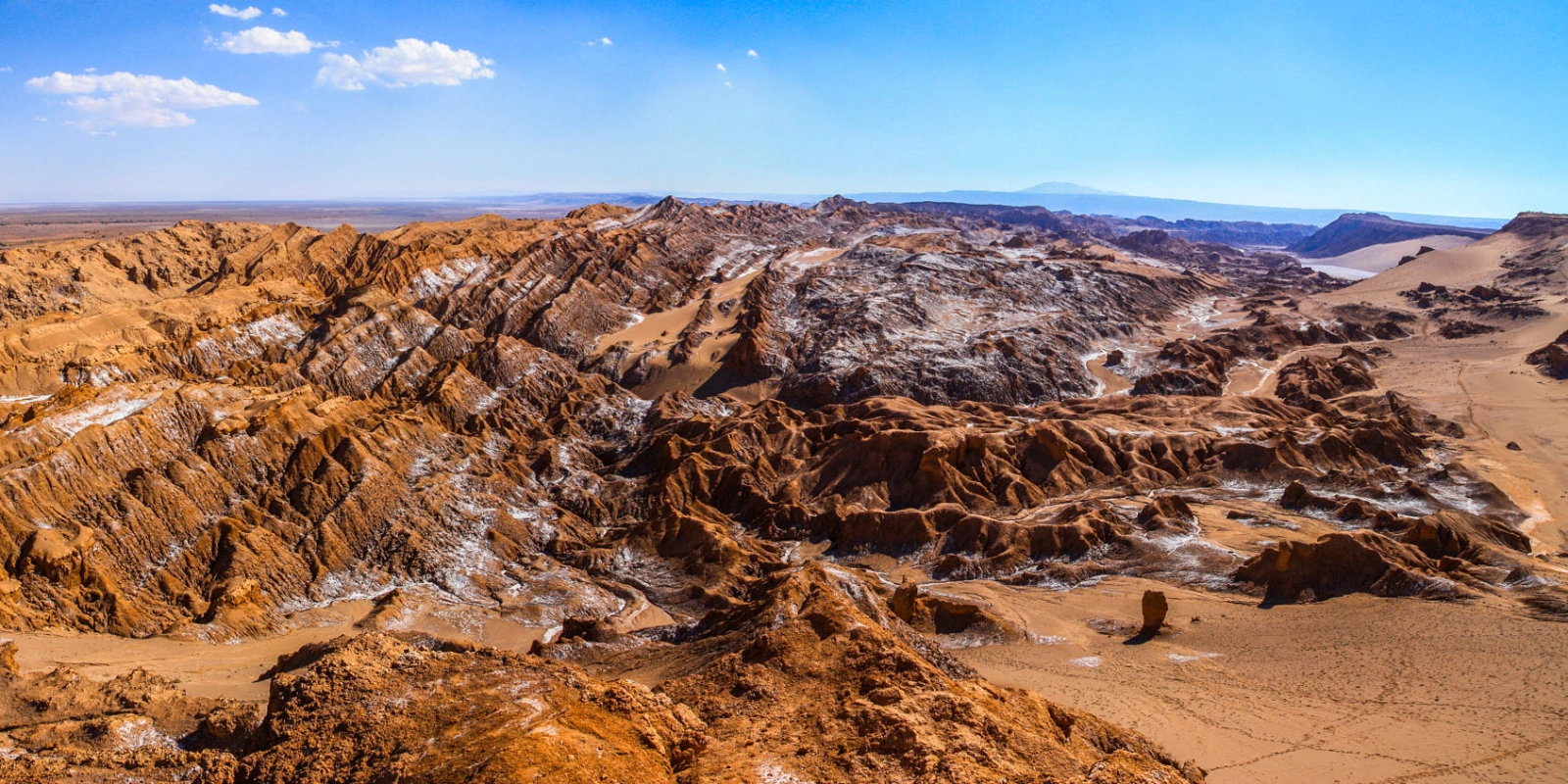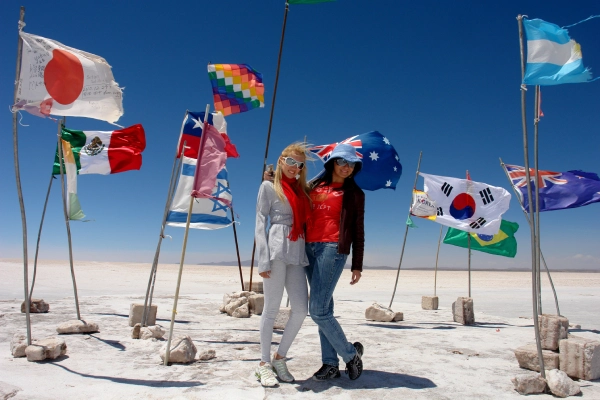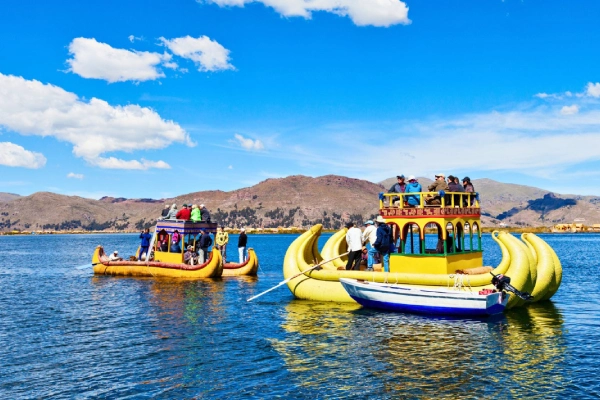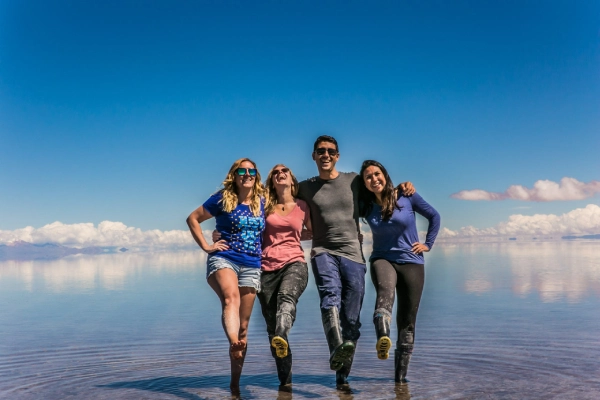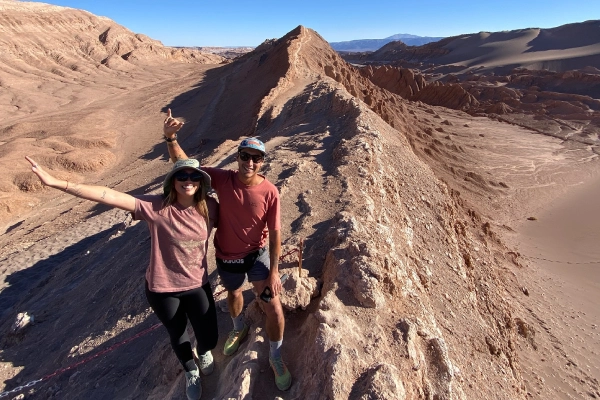Exceptional Bolivia 13 Days
For visitors who want to experience Bolivia in all its magnitude and explore the High Andean Lands. Bolivia is a fascinating attraction that offers an incredible diversity in Cultural and Traditional tourism.
We have designed your Excursions linking the main destinations of Bolivia in a single Travel Program from start to finish you will have a personalized service.
Itinerary
Day 1: La Paz Recepción.
Reception, transfer to the Hotel of your choice, by a Representative of our Travel Agency. This day will be free for air conditioning since the City of Peace is located at 3 640 meters above sea level.
Make sure to drink plenty of water and coca tea, walk slowly to minimize the effects of altitude.
Overnight in the City of La Paz.
Day 2: Flight to Rurrenabaque (D)
In the morning transfer to the airport for your flight to the town of Rurrenabaque. This flight takes only 50 minutes and it will be a unique and impressive experience for you.
The flight begins in the city of El Alto from a height of 4 150 meters above sea level and ends in Rurrenabaque at 228 meters above sea level. It crosses above the Cordillera Real de los Andes and ends in the Bolivian Amazon. Reception and transfer to the lodging of your choice.
You will have the afternoon free to walk around in this beautiful town.
Overnight in Rurrenabaque.
Day 3: Rurrenabaque – Rio Yacuma Municipal Reserve – Pampas (D – A – C)
At the right time, pick up from the lodging and departure from Rurrenabaque by land transport, the trip will take approximately 3 hours, passing through the cattle towns of Reyes and Santa Rosa del Yacuma, on the way it is possible to see, observe some animals and birds typical of the Pampas. Lunch in Santa Rosa del Yacuma.
In Santa Rosa you must pay the entrance to the Municipal Protected Area. Then arrival at the port. Then, we continue by river transport, from the Yacuma river to our lodge, the trip will take approximately 3 hours.
Sailing very slowly to take advantage of the observation of wild animals of different species such as: Lizards, Caimans, Capybaras, Monkeys, Turtles, Birds and the guide will provide you with the necessary information.
Arrival at the ecological lodge, then you go to the hammock to take a rest and a refreshing welcome juice typical of our region. While they receive their rooms.
Then we will go to a strategic place for see the sunset, and then we return to the lodge.
Buffet dinner in our dining room. After dinner you will have a boat ride with the engine turned off and with flashlights to observe the Eyes of the Lizards, Alligators and Night Birds, the guide will explain the differences between them.
Overnight at Rio Yacuma Municipal Reserve Lodge – Pampa
Day 4: Pampas (D – A –C)
Early in the morning, departure by boat with the engine off to listen to the song of the birds and the different sounds that the animals produce, also you will see the sunrise. We will return to the hostel to have the buffet breakfast, in our restaurant.
After breakfast we will give to you a rubber boots and cold or natural mineral water. They leave by boat with an outboard motor and, then you will continue walking to look for different species of snakes such as: Anacondas, Cobras etc. You will see species of Birds such as: Ñandú, Jabirú, Águilas, among others.
At noon we return to the lodge for a buffet lunch. In the afternoon, departure by boat with an outboard motor in search of a suitable place for Piranha Sport Fishing, in addition to sailing further afield to go in search of more animals and birds. Dinner and overnight.
Overnight at Rio Yacuma Municipal Reserve Lodge – Pampa
Day 5: Pampas – Rurrenabaque (D –A)
In the morning, buffet breakfast, after breakfast, we will sail until we reach the place where the Pink Dolphins are to swim and play with them.The guide will give to you some information about them.
Then we will return to the lodge for see and take photos of different animals and birds. We will have lunch before returning by boat with an outboard motor to the port of Santa de Yacuma where you will be at 1:30 PM. to the tourist port.
Return to Rurrenabaque by land transport. Arrival in Rurrenabaque and transfer to the accommodation of your choice.
Overnight in Rurrenabaque.
Day 6: Flight La Paz – La Paz – City Tour (D)
A representative of our Travel Agency will transfer you to the airport for your return flight to La Paz city. Then we will begin our visit of approximately 3.30 minutes through the city of La Paz.
Youwill visit the main tourist places such as: the Witches’ Market, Plaza Murillo, where the cathedral, the Government Palace, the Congress are located.
Then, you go down the famous Jaén street where the municipal museums are located. We continue to the Killi – Killi Viewpoint to have an amazing view of the City of La Paz.
To change the scene, we go south, passing through Miraflores, Obrajes, Calacoto, Florida, Aranjuez, and finally we reach the Valley of the Moon.
It has interesting and beautiful land formations made by the wind and water, we will take a walk around the surroundings and finally we will drive you to the Hotel of your choice.
Optional: Cable car ride
Overnight in the City of La Paz.
Day 7: La Paz – Copacabana – Sun Island – La Paz (D – A)
We will pick you up from your Hotel, to transfer you to the town of Copacabana. This trip lasts approximately 3 hours. and 30 minutes during the trip we will observe the Cordillera Real de los Andes and the vast plateau. We will cross the Strait of Tiquina to reach the Copacabana peninsula. Arrival at the town of Copacabana.
In Copacabana we will visit the Copacabana church, where the miraculous Virgin of Copacabana is located, and if we are lucky we will see the challa that is the blessing of decorated cars that are parked outside the church.
Then we transfer them along a ripped road to the town of Yampupata, this road surrounds beautiful views of Lake Titicaca and the agricultural floors that are around the Sacred Lake. We arrive at Yampupata and we will take our private boat that will take us to the island of the Sun.
We will pass through the steps, the fountain of youth. We will observe the beautiful agricultural terraces that look as if they were a true Eden.
After lunch we will go back to Yampupata, Copacabana and the city of La Paz.
Overnight in the City of La Paz.
Day 8: Uyuni – Train Cemetery – Incawasi Island – Village Candelaria (A – C)
Early in the morning we will transfer you to the airport for your domestic flight to the City of Uyuni, our representative will be waiting to welcome you.
At an appropriate time, we begin our visit by the train cemetery, where the first locomotives that arrived in the eighteenth century in Bolivia for the transfer of minerals between Pulacayo and Antofagasta are located.
We continue our visit to the great Salar de Tunupa, our next stop is the town of Colchani, where the locals sell salt crafts and make demonstrations about the processing of Salt. Then we enter the Salar itself, which is the largest White Lake of the world with approximately 10,500 km2.
Our visit continues towards the Ojos de Sal, Pyramids of Salt, formerly the Hotel de Sal. We arrive at the Incawasi Island, which is a true Oasis in the middle of the Sal Desert, there you can take a walk after payment and registration, through this unique Island of Cactus.
Then we will go to our first place to spend the night, which is in the town of Villa Candelaria.
Overnight in the Villa Candelaria Population.
DAY 9: Ollague Volcano Viewpoint – Altiplanic Lagoons – Stone Tree – Laguna Colorada – Huayllajara (D – A – C)
After breakfast we will go to the Ollague Volcano Viewpoint, this is an Active Volcano that is located between the countries of Bolivia and Chile. We continue our journey and head towards the Altiplanic Lagoons where we will observe the first flamingos.
We pass through the Kañapa, Hedionda, Honda Lagunas. Our journey goes through steps, we go through the Siloli desert, where the natural monument called: «Stone Tree» is located.
After taking beautiful photographs, we continue to the Laguna Colorada Viewpoint, after registering in the Avaroa National Park, we go to the Viewpoint to observe the thousands of flamingos that nest in this beautiful lagoon.
Our next destination is in the small town of Huayllajara.
Overnight in the Huayllajara Population.
Day 10: Fumarolas – Hot springs – Green Lagoon – San Cristóbal – Uyuni – Bus return to La Paz (D – A)
This day we get up earlier to be able to observe the fumaroles that are active early, it is also the point with the highest elevation of our trip 4900 mt. We go to the Hot Springs, if you want to take a refreshing and therapeutic bath here it is possible.
Then we go to our southernmost point of our trip, the Laguna Verde, which is located in front of the Licancabur Volcano. Our return will be by a direct road passing through rural towns such as San Cristóbal, a model mining town.
Arrival in Uyuni. They will have a few hours of rest. Your bus will transfer you back to the City of La Paz.
Overnight on the bus heading to La Paz.
Day 11: Arrival La Paz – Tiwanaku – La Paz (D –A)
Early in the morning arrival in the City of La Paz. We will transfer you to the Hotel of your choice, after breakfast we leave in the morning to the epic City of Tiwanaku, capital of the Pre-Inca culture. Tiwanaku is 72 km away.
from the City of La Paz and close to the southeast on the shores of Lake Titicaca. During its great times, the capital of Tiwanaku was the largest in the world and considered the cradle of all the civilizations of America. The Pre-Inca archaeological complex ended according to archaeological debates and tests made using carbon 14 dating from 1,580 BC.
Among the main places of interest in Tiwanaku that we will visit are: The Kalasasaya Temple, the Semi-underground Temple, the Akapana Pyramid, the legendary Puerta del Sol. We will also make a stop at Puma Punku (gigantic rocks are located there).
Then we will have a typical lunch based on Quinoa soup and Llama meat as the main dish. During the afternoon we will return to the City of La Paz.
Overnight in the City of La Paz.
Day 12: La Paz – Road of death – La Paz – Bicycle (D – A)
In the morning we will begin the most exciting adventure that is downhill by bicycle. Our starting point is at the Summit, which is part of the Cordillera Real de Los Andes, located at 4750 meters above sea level. From here we descend along a paved path that at the same time offers exciting and beautiful views, from the rugged rocky ravines to the green sub-tropics.
During our journey we will make numerous stops to rest and take pictures, after passing through a checkpoint where cyclists pay their income, we will continue our descent. From an almost ghost town called Chuspipata we will begin our true adventure, which is called “The Road of Death”, this road that has an approximate width of 4 mt. in some points and abysses of 200 to 300 mt. At certain times it can be foggy and suddenly clear.
We passed waterfalls and lush scenery. Finally, you arrive at our resting point which is located at 1200 mt. There they can shower and have lunch. Return to the City of La Paz.
Overnight in the City of La Paz.
Day 13: La Paz – Departure
Unfortunately, this is your last day in our country, we hope you had a cozy stay and that you take home, a beautiful memories of Bolivia. Our representative will assist you with the Check-In.
Important: The hours of the tour excursions will be reconfirmed at the destination.
For the development of this program a minimum of 2 Pax is required.
Included
TOUR INCLUDES
- Group Transportation 4 × 4
- Guide / Specialized Driver.
- Entrance Tickets
- Meals mentioned in the Program.
THE TOUR DOES NOT INCLUDE
- National or international air tickets.
- Services not detailed in the program.
- Extra money.
- Tips and others.
CONTACT US
GENERAL CONDITIONS
- All rates for our Packages to Bolivia are expressed in US dollars (optional for currency exchange) and are programmed per person.
- The rates valid for Peruvians only include IGV
- All our rates are subject to availability and changes.
- Children under 02 years and 11 months are considered INF (babies), do not pay any service and do not have the right to food, bed or seat on the tours.
- DCC (child) is considered a child from 03 to 10 years and 11 months, has a special rate and shares a room with parents.
- Children over 11 years old considered adults.
- Minors must travel with an identity document.
- Rates do not apply to holidays, Easter, long weekends, national holidays, Christmas or New Years.
More Information
LA PAZ, BOLIVIA
Bolivia is a magical country, with a wonderful culture and a lot of biodiversity, La Paz is a city full of contrasts and the most cosmopolitan of Bolivia.
Its diversity, both geographical and cultural, offers its visitors a unique and unforgettable experience, which highlights its development, modernity and the memory of a past that has contributed greatly to the great transformations of Bolivia.
Within the same country of Bolivia, you can find salt deserts the size of Asturias, mountains that touch 6,500m in altitude, and an Amazon jungle that will impress you.
Climate of La Paz Bolivia
In La Paz, the summers are short, cool and cloudy and the winters are short, very cold, dry and partly cloudy.
During the course of the year, the temperature generally ranges from -2 ° C to 15 ° C and occasionally drops below -5 ° C or rises above 18 ° C.
And it is recommended to visit La Paz for activities in hot times, from the end of April to the end of May, and from August to the first days of December.
Places to visit in La Paz.
- The Basilica of San Francisco .- It is the main religious temple in La Paz, it was built in 1758. Along with its balanced and spiritual beauty, it has a legend referring to the initiatory evangelization of the indigenous people.
- Calle Jaén .- Colorful, showy and very cheerful by day, Calle Jaén fills with enigmas, gruesome stories and disturbing mysteries when night falls. Do you dare to visit it under the haunting presence of darkness?
- The cable car .- Many cities have this means of transport. In La Paz it was built recently. Cheap and with spectacular views, we recommend that you get on it in the Plaza de España. Once in El Alto, it would be a good idea to eat a typical fried chicken.
- The Valley of the Moon.- Located in the South Zone, it is a lunar scene that seems to be taken from a space movie. Armstrong, the first astronaut to walk on the moon, has recognized that it is the closest thing to the moon that he has ever seen.
- Sorata.- Planning an excursion to the Sorata Valley allows you to admire the mountain known as Nevado Illampu, make unforgettable trekking or hiking routes, visit the colonial town and visit the San Pedro caves.
Lake Titicaca – Copacabana
This lake is located in the Department of La Paz, three hours by bus from the capital of the same name.
Lake Titicaca It is 283 meters deep and has a total extension of 176 km. long by 70 km wide, and it is classified as the highest navigable lake in the world, with a height of 3,810 meters above sea level.
It is divided into two main basins, called “Lago Mayor del Titicaca” and “Lago Menor del Titicaca”.
Tourist Attractions in Copacabana Lake
- Tiwanaku Huatajata Copacabana
- Sun `s Island
- Suriki Island
- Island of the Moon or Koati
- Kewaya Island or Kala Uta
- Pre-Columbian Cultivation Terraces
- Sampaya
- Yampupata
The Island of the Sun
It is located in Bolivia located in the middle of Lake Titicaca, and has a length of 9.6 km by 4.6 km wide and an area of 14.3 km². And it is the highest lake in the world.
Legend has it that on that island Sol created his son, Manco Capac and his daughter Mama Ocllo, the first Incas who later went north to found Cusco in the heart of what would become the Inca empire.
To get to the island of the sun, the only way to get there is via Copacabana on the Bolivian side of the lake. The city of Copacabana is 2 hours from Puno, on the Peruvian side.
Once there you can discover postcard landscapes, important archaeological sites and Quechua and Aymara communities that today maintain their ancestral traditions.
Throughout the entire island there are several archaeological sites, where the “Sacred Rock” or Rock of the origins stands out, which according to the chronicles was the site from which Manco Cápac and Mama Ocllo left to found the city of Cuzco. Likewise, the Chinkana or labyrinth is appreciated, in addition to the Pilkokaina Palace from the Inca period, unique for its constructive characteristics.
When to travel to Isla del Sol
You can visit all year round and enjoy a cold semi-arid climate. The temperatures during the year vary between 25 ° C to 15 ° C during the day while at night the temperatures drop radically even below 0ºC.
The best and recommended time to visit the island is between May and October because the days are warm and sunny, but the nights will always be quite cool.
The ideal time of stay is 2 days to be able to enjoy the northern area, visit the ruins, make the Inca Trail to the southern area, rest and the next day enjoy the sunrise on the island and return to Copacabana.
Ollagüe volcano
The Ollagüe volcano is an active stratovolcano located on the border of Bolivia and Chile, in the Antofagasta Region in Chile, and the Department of Potosí, in Bolivia, in the Andes mountain range, with a height of 5868 meters above sea level, and has a crater 1250 meters in diameter, which has been eroded in the southern part.
Stone Tree – The largest tree in the world
It is located at the entrance to the Andean Fauna National Reserve, very close to the Uyuni salt flat, in the Siloli Desert.
With a height of almost 5 meters, this rock of volcanic origin has been shaped by the action of the winds until composing, through years of erosion, the rare image that ended up giving it its name as the Stone Tree.
Its rocky composition is made up mainly of iron, whose greatest wear occurs with the abundant winter rains. At this time of year, the area reaches temperatures of up to 30 degrees below zero. On the other hand, the summer season attracts suffocating heat. This extreme climate has favored erosive corrosion that has carved the stone.
The red lagoon
It could be that the water in this lagoon is of such a special color because the thousands of Andean flamingos that go there to breed their feathers fade.
It takes its name from the hue of the waters that appear reddish thanks to the pigments released by the algae.
Why go to the Laguna Colorada?
It has enough reasons to see it, among them that it is a 54 square kilometer lagoon, being the perfect area for exploring and observing birds. Its nature is impressive and also very beautiful.
Price
HOW MUCH?
We have price alternatives that accommodate all budgets, prices per person, expressed in US Dollars.
Make your quotes and reservations by email [email protected], you can also communicate with one of our sales executives at the telephones detailed below, we will be happy to assist you.
Phone – WhatsApp: +51 969 787 221
Phone – WhatsApp: +51 986 994 218
HOW TO BOOK THE TOUR?
To start the reservation process, please send us the following information:
- Name and surname:
- Passport number:
- Nationality:
- Date of Birth:
- Phone:
- Very important – We need the address and information about the hotel that you are staying at, in the city of La Paz, to be able to pick you up at the time when the tour starts.
To confirm reservations it is required to pay 50% in advance and the other 50% can be paid upon arrival at your destination.
PAYMENT METHODS
- IZIPAY
- PAYPAL
- WESTER UNION
- MONEYGRAM
- TRANSFER TO OUR BANK ACCOUNT PERU

